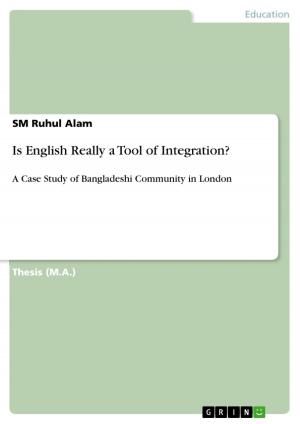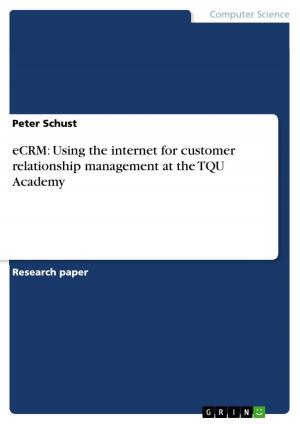The history of Spitalfields
Point of arrival
Nonfiction, Reference & Language, Study Aids, ESL, Foreign Languages| Author: | Katharina Grafmüller | ISBN: | 9783640275250 |
| Publisher: | GRIN Publishing | Publication: | February 25, 2009 |
| Imprint: | GRIN Publishing | Language: | English |
| Author: | Katharina Grafmüller |
| ISBN: | 9783640275250 |
| Publisher: | GRIN Publishing |
| Publication: | February 25, 2009 |
| Imprint: | GRIN Publishing |
| Language: | English |
Seminar paper from the year 2007 in the subject English Language and Literature Studies - Culture and Applied Geography, grade: 2,3, University of Osnabrück, 10 entries in the bibliography, language: English, abstract: The name 'Spitalfields' refers to St. Mary's Spital, a hospital and a priory founded in 1197, at the east end of London. Up to the 17th century the area mainly consisted of gardens and fields, but with the waves of immigrants the house building started. Spitalfields has been a great access point for immigrants from all over the world in the last few centuries. The best example for this changing of inhabitants is the building at the corner of Brick Lane/ Fournier Street: It started as a protestant church in 1774, in 1897 it was turned into a synagogue and finally in 1975 it became the London Jamme Masjid Moshe. In 1685 the 'Edict of Nantes' from 1598 was revoked by Louis XIV (www.wikipedia.org) and the radical Protestants in France were forced to leave the country. Many of them settled down in Spitalfields. During the 19th century the population in Ireland grew poorer and poorer. Many left their home country to try to make their living elsewhere and the better part of them also moved to Spitalfields. At the same time the Jews in Eastern Europe were persecuted and they, too, chose Spitalfields as their new living space. Eventually in the 1970s people from South Asia started populating Spitalfields for the better working and living conditions in Great Britain. Today the area is called 'Banglatown' and a centre of South Asian Life and culture in London. Many of the street signs in 'Banglatown' are both in English and Bengali and it consists of lots of restaurants with Bengali Food. The following peace of work will describe the living conditions of the particular groups of immigrants in detail and explain their influence on Spitalfields. [...]
Seminar paper from the year 2007 in the subject English Language and Literature Studies - Culture and Applied Geography, grade: 2,3, University of Osnabrück, 10 entries in the bibliography, language: English, abstract: The name 'Spitalfields' refers to St. Mary's Spital, a hospital and a priory founded in 1197, at the east end of London. Up to the 17th century the area mainly consisted of gardens and fields, but with the waves of immigrants the house building started. Spitalfields has been a great access point for immigrants from all over the world in the last few centuries. The best example for this changing of inhabitants is the building at the corner of Brick Lane/ Fournier Street: It started as a protestant church in 1774, in 1897 it was turned into a synagogue and finally in 1975 it became the London Jamme Masjid Moshe. In 1685 the 'Edict of Nantes' from 1598 was revoked by Louis XIV (www.wikipedia.org) and the radical Protestants in France were forced to leave the country. Many of them settled down in Spitalfields. During the 19th century the population in Ireland grew poorer and poorer. Many left their home country to try to make their living elsewhere and the better part of them also moved to Spitalfields. At the same time the Jews in Eastern Europe were persecuted and they, too, chose Spitalfields as their new living space. Eventually in the 1970s people from South Asia started populating Spitalfields for the better working and living conditions in Great Britain. Today the area is called 'Banglatown' and a centre of South Asian Life and culture in London. Many of the street signs in 'Banglatown' are both in English and Bengali and it consists of lots of restaurants with Bengali Food. The following peace of work will describe the living conditions of the particular groups of immigrants in detail and explain their influence on Spitalfields. [...]















